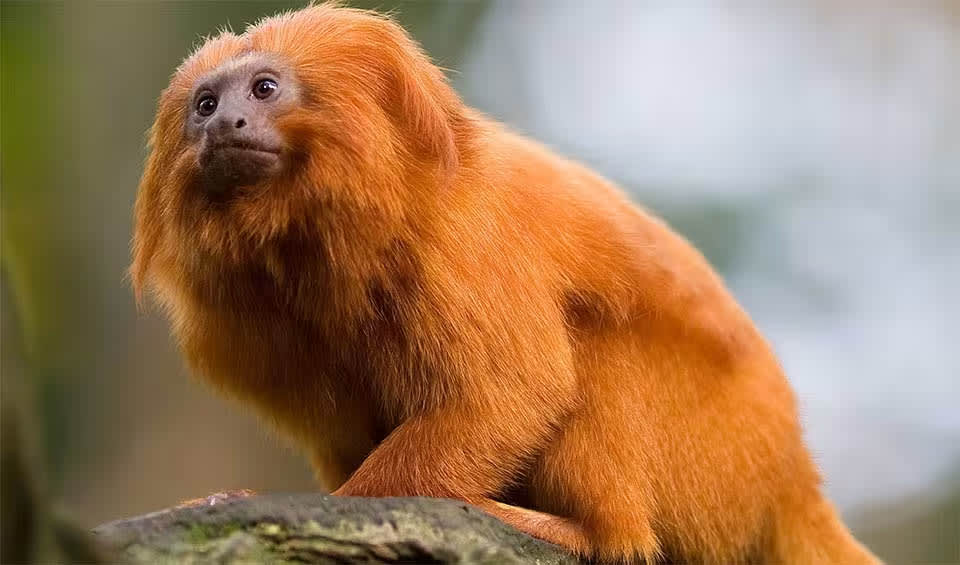With its resplendent orange fur and majestic mane, it stands as a jewel of the Brazilian forests, evoking the regal presence of a lion in the compact, nimble body of a monkey. This exquisite primate, native exclusively to the Atlantic Forest of Brazil, captivates all who encounter it, offering a glimpse into the rich biodiversity of one of the world’s most endangered ecosystems.
Measuring just around 26 centimeters (10 inches) in length and weighing approximately 600 to 700 grams (1.3 to 1.5 pounds), the golden lion tamarin is a marvel of agility and grace. Its distinctive mane, surrounding its face and extending down its shoulders, along with its striking golden-red coat, make it one of the most visually arresting species in the animal kingdom. Despite its small size, the tamarin is a formidable climber, equipped with long, slender limbs, a dexterous tail that aids in balance, and claw-like nails designed for gripping tree branches.
Socially, golden lion tamarins exhibit a highly cooperative and familial lifestyle. They form tight-knit groups that not only serve as hunting and foraging teams but also provide a support system for raising young. These family units, typically comprising two to eight members, navigate the forest canopy together, sharing food and participating in the communal care of offspring. Such social bonds are reinforced through a complex system of vocal and non-vocal communication, including whistles, trills, barks, and a range of facial expressions that convey emotions and intentions within the group.
The diet of the golden lion tamarin is as varied as the forest it inhabits, consisting of fruits, flowers, nectar, insects, and small vertebrates. This dietary diversity plays a crucial role in the health of the Atlantic Forest ecosystem, as tamarins act as pollinators and seed dispersers, contributing to the regeneration of the forest.
Distribution
 Brazil
Brazil Official estimate
Official estimate
Anything we've missed?
Help us improve this page by suggesting edits. Glory never dies!
Suggest an editGet to know me
Terrestrial / Aquatic
Altricial / Precocial
Polygamous / Monogamous
Dimorphic / Monomorphic (size)
Active: Diurnal / Nocturnal
Social behavior: Solitary / Pack / Herd / Troop
Diet: Carnivore / Herbivore / Omnivore / Piscivorous / Insectivore
Migratory: Yes / No
Domesticated: Yes / No
Dangerous: Yes / No




